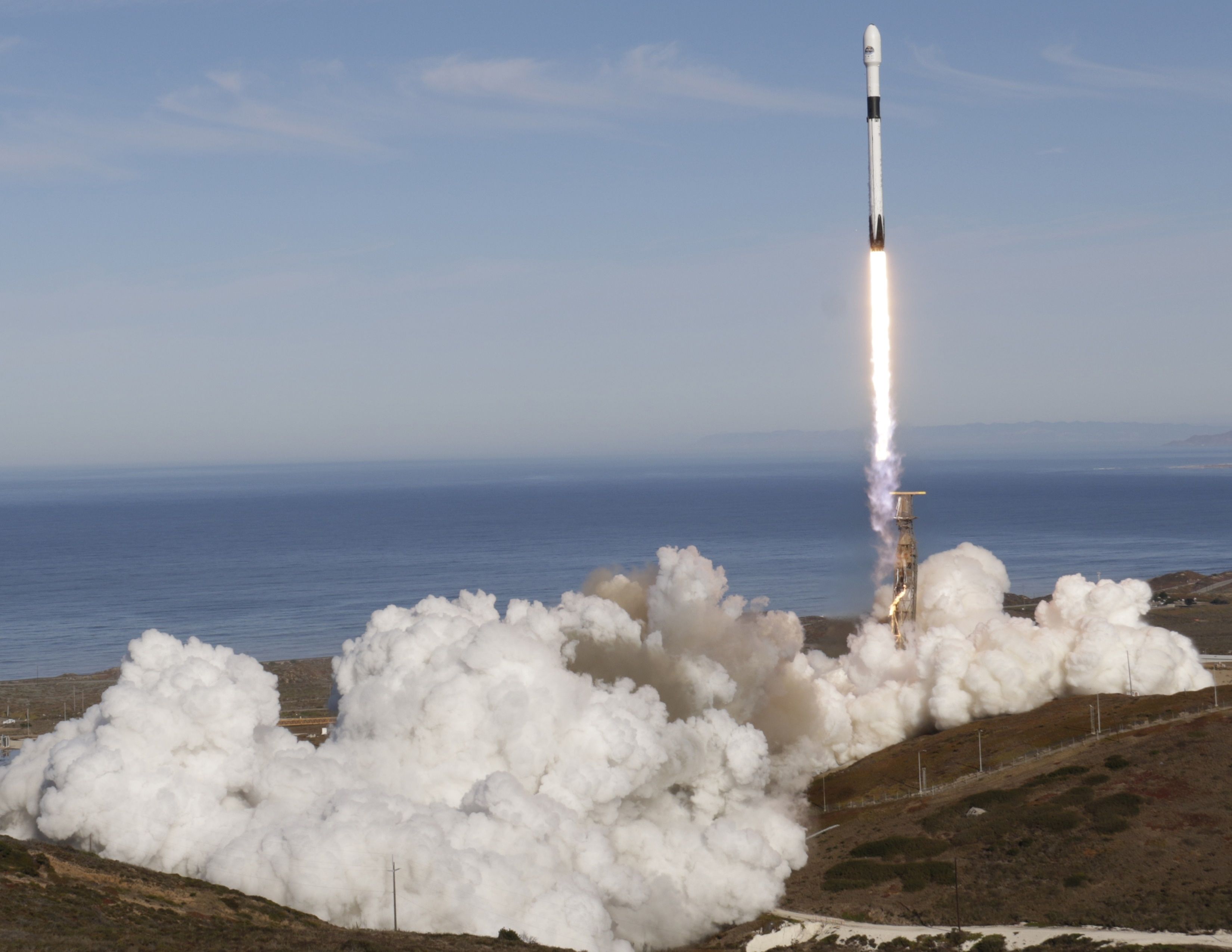NATO Augments Its Space Policy

In October 2020, NATO defence ministers decided to establish a Space Centre at the Allied Air Command in Ramstein. This is the result of NATO’s adoption of a space policy in 2019 (the document is not public) and the recognition of space as the fifth domain of operational activities (after land, sea, air, and cyberspace). NATO’s goal is to develop the capability to conduct collective defence missions in space, which is crucial for military operations in other domains.
NATO Space Capabilities
Since the 1960s, NATO has been using satellite capabilities for collective defence and deterrence missions. They are used, for example, for ground and space observation (optical and radar), communications (SATCOM), and navigation. Satellites provide militaries with intelligence, surveillance and reconnaissance (C4ISR), target acquisition, long-distance precision-strike capability, and support for missile defence. They are crucial for modern warfare, which requires the fast and secure transfer of large amounts of data between headquarters, troops, and individual weapon systems. Such capabilities are often prohibitively expensive. Although the costs of developing, maintaining, and sending satellites into orbit have decreased with the development of technology, the systems are still beyond the reach of many countries.
NATO depends largely on U.S. satellites, but some capabilities can also be provided by the United Kingdom, France, and Italy (and to a lesser extent also Germany and Spain). In the past, NATO had its own communications satellites, which allowed for a fairer distribution of costs (burden-sharing) between the U.S. and European allies. In the early 2000s, however, these satellites completed their lifecycle and no decision was made to invest in new ones. The Alliance’s space policy was limited to providing basic SATCOM capabilities to conduct joint missions. From 2005 to 2019, the Alliance relied on capabilities provided by a British-Franco-Italian consortium. In 2019, NATO signed an agreement with the U.S., UK, France, and Italy for guaranteed access to military communication satellites. It also approved $1 billion from a common budget to cover these services over the next 15 years.
The Allies also use civilian satellite services provided by commercial companies. This reduces costs. Redistribution of signal between multiple satellites also reduces the risk of a complete loss of access to such capabilities in the event of a failure or attack. At the same time, the multiplicity of military and commercial systems used by different countries makes it difficult for troops to cooperate within a single mission. Commercial civilian systems also have lower protection standards (e.g., against electromagnetic pulse, or EMP) and are not as well prepared to operate during wartime as military ones. NATO’s reliance on commercial systems also creates the risk that in a crisis a company will not grant the Alliance access to its satellites.
Strengthening NATO Space Policy
Strategic documents by NATO and its member states indicate that the long-term threats and challenges to the security of the Alliance will be related to Russia’s aggressive policy and the growing power of China. Both states are developing, among others, the potential to deprive an enemy of satellite capabilities through attacks (kinetic, cybernetic, radio-electronic, and laser) on space and land infrastructure or by signal interference. NATO, which has been strengthening its defence and deterrence policy since Russia’s annexation of Crimea in 2014, must also strengthen the defence of satellite systems, which support all types of armed forces and operations in other domains. The Alliance is developing the potential for high-intensity conflict and introduces modern weapon systems (5th-generation aircraft, unmanned systems) and technologies (including Artificial Intelligence, or AI), which will increase the demand for space-based systems. To meet the demands of modern warfare and increase the security of space-based systems, the allies will look for small, scattered, high-capacity satellites.
In recognising space as an area of NATO operational activities, the allies could include it in the collective defence policy of the Alliance. As this is the main NATO mission, stemming from treaty obligations, the allies would have to ensure the necessary space capabilities and fair burden-sharing. The new NATO Space Centre will facilitate the management of available military and commercial assets and the planning of their use during exercises and missions. NATO will be able to strengthen the ability to detect threats to satellite systems and strengthen resilience to attacks by, for example, preparing to replace lost capabilities.
NATO space policy can stimulate the development of new, secure, high-capacity satellite systems. It will be possible to include them in the NATO Defence Planning (NDPP), which defines what capabilities the allies should develop for the purposes of joint missions. The Alliance will also be able to use funds from the common budget, for example, for research and development. It already plans to create a NATO Space Technology Centre. The development of a common policy will be supported by a NATO Centre of Excellence, for which France and Germany compete. The Alliance will also be able to train cadres necessary for the implementation of space policy using existing institutions (NATO’s Joint Air Power Competence Centre, NATO Defence College in Rome, NATO School in Oberammergau, Germany).
The Allies also need to develop a new doctrine for conducting a collective defence-and-deterrence mission in space. NATO is a defence alliance and has announced that it will act in accordance with international law and does not intend to deploy weapon systems in space, which are outlawed. However, defence can be both passive (securing infrastructure and data against attack, duplicating the number of systems, manoeuvrability) and active (capability of attacking enemy systems that pose a threat). The doctrine should define whether, under what circumstances, and with what resources NATO will be able to conduct such pre-emptive actions. It should also determine whether an attack on an Alliance satellite system could lead to the invocation of Art. 5 of the Washington Treaty and a collective response by all member states.
Conclusions and Recommendations
NATO space policy, supported by the development of the necessary structures, institutions, and satellite systems, offers new opportunities for a more equitable distribution of costs between the U.S. and the rest of the allies. In the event of the loss of some satellite capabilities by the U.S., for example, in a conflict with China, NATO should be able to support the United States with space-based capabilities offered to the Alliance by European allies. Politically, this will be an important element of strengthening transatlantic ties at a time when U.S. threat perception will be increasingly focused on China. As resilience to attacks will largely depend on the ability to replace lost capabilities, the Alliance should strengthen its cooperation with the EU. The possibility for NATO to gain access to the EU’s satellite navigation (Galileo) and observation (Copernicus) systems would seriously hamper Russia and China’s ability to cut off the Alliance from satellite capabilities.
The inclusion of space in NATO’s collective defence mission creates an opportunity for faster development of space capabilities by the member states, including Poland. It does not have its own satellites, but plans to develop such systems for communication and Earth-observation purposes. Establishing national capabilities to detect, track, and identify objects in space (situational awareness) is also a priority. Sharing some of the planned capabilities for NATO purposes will be necessary to meet the obligations of burden-sharing, proportionate to Polish potential.
Poland may obtain optimal conditions for the development of space capabilities through both cooperation in NATO with countries interested in supporting the Alliance’s capabilities and the mechanisms of the European Union (PESCO, EDF). It is in Poland’s interest to support the cooperation of both organisations in the development of space technologies, including small, high-capacity satellites and more cost-effective, environmentally friendly ways of placing them in orbit (e.g., launch vehicles for small satellites).


